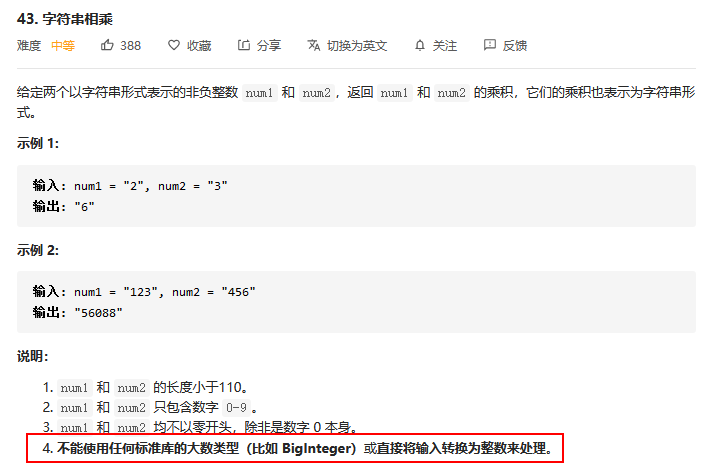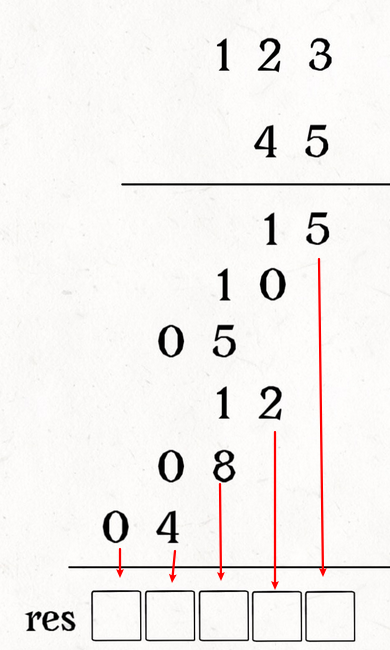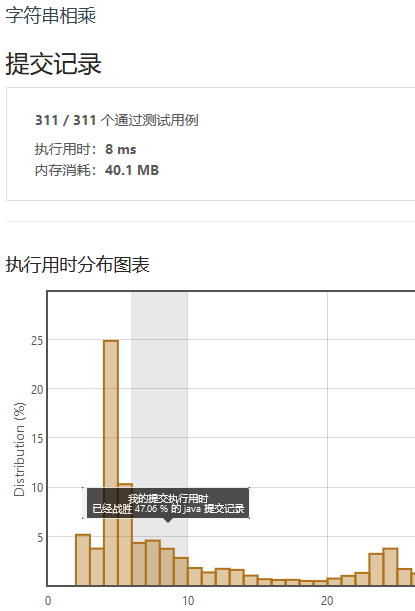
借鉴了评论区的大佬的简化乘法思路,如下图:

巧妙之处在于使用res数组来依次接收每一次乘法的部分结果,从而能够避免较大数字相乘带来的数据溢出问题
1 public static String multiply(String num1, String num2) { 2 //记录相乘的结果,最大位数不过二者长度之和 3 int[] res = new int[num1.length() + num2.length()]; 4 //将每一步相乘的结果填入res对应的位置:index 5 int index; 6 //辅助index 7 int cnt = 0; 8 for (int i = num2.length() - 1; i >= 0; i--) { 9 //乘数x 10 int x = num2.charAt(i) - '0'; 11 index = res.length - 1 - cnt; 12 for (int j = num1.length() - 1; j >= 0; j--) { 13 //被乘数y 14 int y = num1.charAt(j) - '0'; 15 int tmpRes = x * y; 16 res[index] = res[index] + tmpRes % 10; 17 //检查res[index]的元素是否进位,并且处理进位 18 check(res, index); 19 index--; 20 res[index] = res[index] + tmpRes / 10; 21 check(res, index); 22 } 23 cnt++; 24 } 25 //将数组形式保存的结果以字符串形式拼接 26 StringBuilder sb = new StringBuilder(); 27 //用来定位第一个非零元素下标 28 index = 0; 29 //是否找到第一个非零元素 30 boolean flag=false; 31 for (int i = 0; i < res.length; i++) { 32 if (res[i] != 0) { 33 index = i; 34 flag=true; 35 break; 36 } 37 } 38 //没找到第一个非零元素,说明结果全部都是0,自然返回"0" 39 if (flag==false){ 40 return "0"; 41 } 42 for (int i = index; i < res.length; i++) { 43 sb.append(res[i]); 44 } 45 return sb.toString(); 46 } 47 48 private static void check(int[] res, int index) { 49 if (res[index] >= 10) { 50 res[index - 1] += res[index] / 10; 51 res[index] = res[index] % 10; 52 } 53 }
运行结果:
